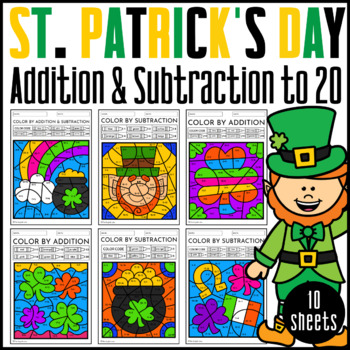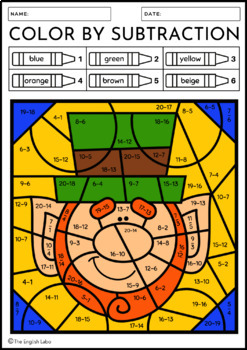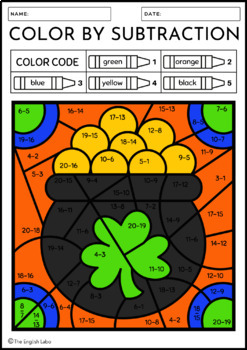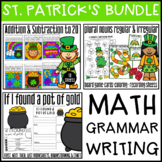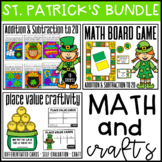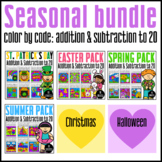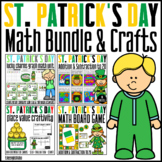St. Patrick's Day Color By Code {Addition & Subtraction to 20}
- PDF
Also included in
- This Bundle is about St. Patrick's Day. More specifically you will find the following:St. Patrick's Day Color By Code {Addition & Subtraction to 20}St. Patrick's Day Plural Nouns adding -s -es- iesIf I Found a Pot of Gold Writing CraftivityI love to see my resources in action in your classrooms.Price $7.70Original Price $10.70Save $3.00
- This bundle is about St. Patrick's Day and it focuses on math skills. More specifically you will find the following resources:1. St. Patrick's Day Pot Of Gold Craft | Math Activity | Place Value Craft Value Cards (2-digit, 3-digit & 4-digit numbers)Recording sheets, color or B/W (2-digit, 3-digiPrice $7.00Original Price $9.70Save $2.70
- This is a file about Seasonal Color By Code. It's a nice way to revise your students' addition & subtraction skills or to check their understanding. Pupils have to solve the math and color the worksheets. You will find different templates and KEY. What's included:St. Patrick's Day Color By CodePrice $10.24Original Price $12.80Save $2.56
- This bundle is about St. Patrick's Day and it focuses on math skills. More specifically you will find the following resources:1. St. Patrick's Day Pot Of Gold Craft | Math Activity | Place Value Craft Value Cards (2-digit, 3-digit & 4-digit numbers)Recording sheets, color or B/W (2-digit, 3-digiPrice $10.00Original Price $12.70Save $2.70
Description
This is a file about St. Patrick's Day Color By Code. It's a nice way to revise your students' addition & subtraction skills or to check their understanding. Pupils have to solve the math and color the worksheets. You will find 10 templates and KEY.
What's included:
- Color by Addition to 20: 3 sheets
- Color by Subtraction from 20: 4 sheets
- Color by Addition & Subtraction to and from 20: 3 sheets
- KEY
I love to see my resources in action in your classrooms. Don't hesitate to send me an image on theenglishlabo@hotmail.com or find me on instagram @theenglish_labo
_______________________________________________________________
Follow Me to receive updates on new products. All of my products are on always on a significant sale for the first 24 hours. Let's Be Friends! Check out my Instagram | Facebook | Pinterest and be the first to know about free resources or new products!
________________________________________________________________
★ ★ Want to SAVE MONEY on TPT? Consider leaving feedback! For every review you leave, you earn points that you can put towards future purchases. Simply go to "My Purchases" to leave a review on products you have purchased.★ ★

